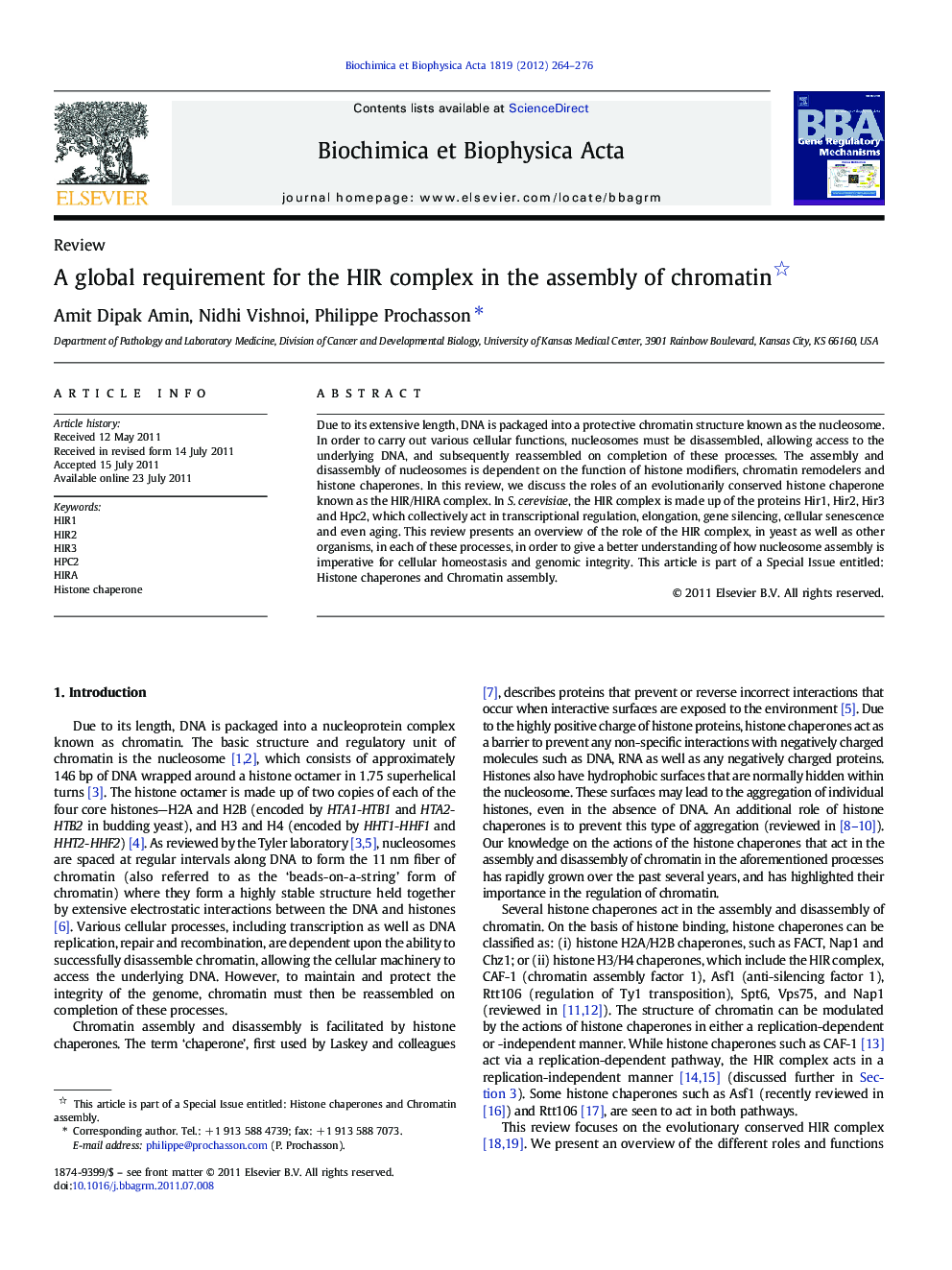| Article ID | Journal | Published Year | Pages | File Type |
|---|---|---|---|---|
| 1946532 | Biochimica et Biophysica Acta (BBA) - Gene Regulatory Mechanisms | 2012 | 13 Pages |
Due to its extensive length, DNA is packaged into a protective chromatin structure known as the nucleosome. In order to carry out various cellular functions, nucleosomes must be disassembled, allowing access to the underlying DNA, and subsequently reassembled on completion of these processes. The assembly and disassembly of nucleosomes is dependent on the function of histone modifiers, chromatin remodelers and histone chaperones. In this review, we discuss the roles of an evolutionarily conserved histone chaperone known as the HIR/HIRA complex. In S. cerevisiae, the HIR complex is made up of the proteins Hir1, Hir2, Hir3 and Hpc2, which collectively act in transcriptional regulation, elongation, gene silencing, cellular senescence and even aging. This review presents an overview of the role of the HIR complex, in yeast as well as other organisms, in each of these processes, in order to give a better understanding of how nucleosome assembly is imperative for cellular homeostasis and genomic integrity. This article is part of a Special Issue entitled: Histone chaperones and Chromatin assembly.
► A global requirement for the HIR complex in the assembly of chromatin ► HIR regulates the histone genes during the cell cycle. ► HIR nucleosome assembly activity is important for the stability of the genome ► Interaction between HIR, Asf1 and Rtt106 in regulating chromatin structure ► Implication of HIRA in senescence, aging, disease and development.
